History Timeline
Penshurst Place has been owned by the Sidney family since 1552; after passing through the hands of two of Henry IV's sons, followed by Henry VIII who used it as a hunting lodge. Given to Anne of Cleves as part of her divorce settlement from Henry VIII, it was then briefly in the hands of Sir Ralph Fane and was finally gifted by Henry VIII's son, Edward VI, to his loyal steward and tutor, Sir William Sidney. Scroll down to browse key events and discover how the past owners have shaped the House we see today.
-
2016
The Sidney Oak Passes Away
After living through many a century, the Sidney Oak in the Penshurst Place parkland, also affectionately referred to as "The Bear Oak", sadly passed away in mid 2016. Legend has it that the Sidney Oak was planted on 30 November 1554, to celebrate the birth of the soldier and poet Sir Philip Sidney, who served Queen Elizabeth I. However, the girth of this English Oak (Quercus robur) actually suggested an age nearer 1,000 years, which predates the Sidneys’ arrival. It is more likely that Sir Philip sat beneath its spreading branches while writing his ‘Arcadia’. As of 2017, visitors to the parkland will see a plaque mounted in its honour, celebrating its long life and legacy, and recognising the new sapling that has self-seeded from its Acorns.
-
2013
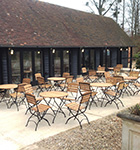
Porcupine Pantry added
The Porcupine Pantry cafe, next to the Visitor Entrance and Gift Shop, was converted from a milking parlour and opened to the public after Easter in 2013.
-
1997
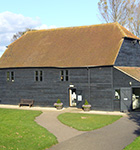
Gift Shop and Visitor Entrance added
The current Visitor Entrance and Gift Shop were added in 1997 following the conversion of an old 19th century barn.
-
1991

Current Owner Inherits
The current owner Philip Sidney, 2nd Viscount De L'Isle MBE, Her Majesty's Lord-Lieutenant of Kent, continues his family's stewardship of Penshurst Place, with his wife Isobel and their two grown up children, Philip and Sophia.
-
1947
Penshurst Place Opens to the Public
Penshurst Place opened to the public in 1946, to help pay for further restoration work following wartime damage.
-
1945
William, 5th Lord De L’Isle Inherits
William Sidney, 5th Lord De L’Isle and Dudley inherited Penshurst Place in 1945. He himself had done much to conserve and order the family finances. Unfortunately, he lived only two months after his accession. So, at the age of 35 his son William Sidney, 6th Lord De L’Isle and Dudley, inherited Penshurst Place.
-
1922
Algernon, 4th Lord De L’Isle Inherits
Algernon became 4th Lord in 1922. He took on restoration work of the Long Gallery but was forced to move to Ingleby Manor, his Yorkshire estate, in his 90th year following three flying bombs from WWII inflicting substantial damage to the House. He died there the following year and Penshurst Place passed to his younger brother William.
-
1898
Philip, 3rd Lord De L’Isle Inherits
The roof of de Pulteney’s original Baron’s Hall was repaired with tremendous care by Philip, 3rd Lord De L’Isle and Dudley, when he in turn succeeded to peerage in 1898. After his death, having no sons, Philip’s brother Algernon inherited the Penshurst Place estate.
-
1851
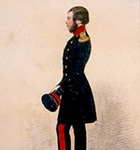
Philip, 2nd Lord De L’Isle Inherits
On his accession, Philip, 2nd Lord De L’Isle and Dudley, employed George Devey for more restoration chief of which was the near-total reconstruction of the Buckingham building which now houses the Long Gallery and Panelled Room. Penshurst Place then passed to his eldest son Philip, 3rd Lord De L’Isle in 1898.
-
1849
Philip, 1st Lord De L’Isle Inherits
John Shelley-Sidney’s son, Philip Sidney, 1st Lord De L’Isle and Dudley, owned Penshurst Place. He continued the architectural work at Penshurst, his projects including the building of a stable wing, part of which now houses the Toy Museum. The estate later passed to his son Philip, 2nd Lord De L’Isle.
-
1781
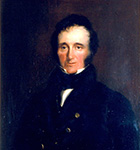
John Shelley-Sidney Inherits
John Shelley-Sidney, the uncle of the poet Percy Bysshe Shelley, inherited Penshurst from his grandmother, Elizabeth Sidney, in 1781. John was just a boy and the House began to deteriorate. However in 1818 he gained full ownership and the North & West parts of Penshurst Place were restored & refurbished by J.Rebecca, his architect.
-
1780
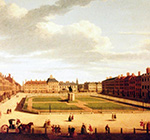
Leicester House Sold
Leicester House, the Sidney’s London home, is sold.
-
c.1744

Elizabeth Sidney Inherits
The nieces of Jocelyn, 7th Earl of Leicester, Mary and Elizabeth, initially become co-heiresses, but a further dispute saw the Penshurst Place estate fall into the hands of Elizabeth and her husband, William Perry. William had a penchant for things Italian, and architectural things which impressed him soon started to be reproduced at Penshurst Place alongside many pictures and pieces of furniture he brought from Italy.
-
1737
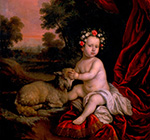
Jocelyn, 7th Earl of Leicester Inherits
Jocelyn, 7th Earl of Leicester, squandered away the Sidney fortune, selling the 2nd Earl of Leicester’s great library to help support his expensive lifestyle. He produced no male heir, meaning that his death in 1743 brought an end to the family title.
-
1705
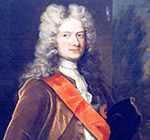
John, 6th Earl of Leicester Inherits
John, 6th Earl of Leicester, owned Penshurst Place. He remained unmarried and died in 1737 when the estate passed to his brother, Jocelyn.
-
1702
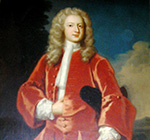
Philip, 5th Earl of Leicester Inherits
Philip, 5th Earl of Leicester, owned Penshurst Place. He died childless in 1705 and Penshurst was inherited by his brother John, 6th Earl of Leicester.
-
1698
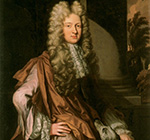
Robert, 4th Earl of Leicester Inherits
Robert, 4th Earl of Leicester, owned Penshurst Place before it passed to his son Philip, 5th Earl of Leicester.
-
1677
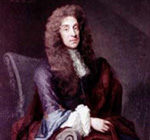
Philip, 3rd Earl of Leicester Inherits
Philip, 3rd Earl of Leicester, owned Penshurst Place before it passed to his son Robert, 4th Earl of Leicester.
-
1649-50
Charles I Children Stay at Penshurst
Robert Sidney, 2nd Earl of Leicester, also ambassador for King Charles I in Paris, was entrusted by Parliament after the execution of Charles I, to care for two of the late King’s children, Henry, Duke of Gloucester, and Princess Mary.
-
1636
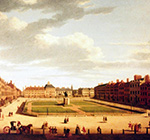
Leicester House Built
A large plot of land was purchased near Westminster in London, by Robert Sidney, 2nd Earl of Leicester, to build a residence to match the Sidney’s prestige. Leicester House was roughly twice the size of Penshurst; paintings of the house are now hanging in the Tapestry Room at Penshurst Place. The Empire cinema, which now occupies the site, gives no hint of its existence – but a trace of Robert’s project remains in its address, Leicester Square.
-
1626
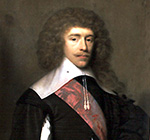
Robert Sidney, 2nd Earl of Leicester Inherits
Inheriting Penshurst after his father’s death in 1626, the Sidney family finances started to increase. Sadly, nothing remains of Robert’s great legacy. He had 15 children, six of them sons. He was quite intellectual, and might have been a happier man had he been able to spend all his days among his books, yet he had a devotion to duty and took an active part in public life, holding a number of diplomatic posts.
-
1621
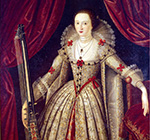
'Urania' Written
Lady Mary Wroth, niece of Sir Philip Sidney, publishes secular poetry 'Urania'.
-
1616
'To Penshurst' is Written
Penshurst’s most famous appearance in English literature came in the early 17th century with a poem by Ben Jonson. ‘To Penshurst’ is one of the finest examples of a country-house poem, in which the estate’s woodland, abundant fruit and game and generous hospitality are praised as aspects of a true family home.
-
1600
Long Gallery Built
Penshurst Place has Sir Robert Sidney to thank for the Long Gallery, a brick addition to the sequence of State Rooms open to the public today.
-
1599
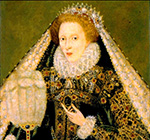
Queen Elizabeth I Visits Penshurst
Queen Elizabeth I first visits Penshurst Place. The Queen Elizabeth Room, open to the public today, was named after her, as she often held audience there during her many visits after 1599.
-
1586
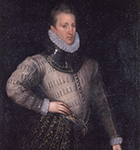
Death of Sir Philip Sidney
Henry and Mary Sidney’s first child Philip, born in 1554, was to live only 31 years, but in that short time he came to represent all the qualities and talent to which any Renaissance gentleman could aspire, a reputation which persists to this day. He was an accomplished poet and is justifiably praised for his literary work including ‘Arcadia’. Sir Philip married Frances, daughter of Sir Francis Walsingham, Secretary of State for Elizabeth I. As such, he was afforded the honour of a State funeral at St Paul’s Cathedral, where he was buried. He was the first commoner to receive such a tribute. Dying only a few months after his father, Sir Philip never took control of the Penshurst Place estate. It therefore passed to his brother Robert.
-
1554
Sir Henry Sidney Inherits
Sir Henry Sidney had spent his childhood at court as the constant companion of the young Prince Edward and, on his accession as King Edward VI, Sir Henry remained his closest friend: legend has it that Edward died in his arms. Sir Henry also became one of the most faithful servants of Queen Elizabeth I. Henry made substantial additions to his house at Penshurst, with alterations to the Buckingham building, adding an attic storey and dividing the first-floor hall into a series of State Rooms, which are now known as the Queen Elizabeth and Tapestry Rooms, open to the public.
-
1552
Penshurst Gifted to the Sidney Family
King Edward VI was keen to reward the services of his tutor and steward of his household, Sir William Sidney. He saw Penshurst Place as a fitting gift, and the house and its estate – located not far from the Sidney ironworks in Sussex – were given to William in 1552: thus began the long and fascinating history of the Sidney family at Penshurst Place.
-
1521
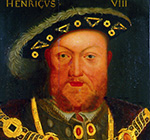
Henry Viii Owns Penshurst
As the estate of a traitor, Penshurst became the property of the Crown and from 1521 Henry VIII used it as a hunting lodge. He would visit his friend and kinsman of the Sidneys, Charles Brandon, Earl of Suffolk, whilst courting Anne Boleyn, his second wife and future Queen, whose family owned nearby Hever Castle. Penshurst Place was part of Henry’s divorce settlement with his fourth wife, Anne of Cleves, and then briefly came into the hands of Sir Ralph Fane before he too was executed for treason. It was left to Henry’s son, King Edward VI, to settle the fate of Penshurst Place after Henry’s death.
-
1519
Henry Viii Visits Penshurst
King Henry VIII arrived at Penshurst as the guest of Edward Stafford, 3rd Duke of Buckingham – an event which the Duke saw fit to lavish the staggering sum of £2,500 – over £1 million in today’s money. Henry had no male heir and saw Buckingham as a threat. Known as ‘the proud Buckingham’, he had a strong claim to the throne himself. Henry therefore found an excuse to have him tried for treason and beheaded.
-
1483

Edward Stafford, 3rd Duke of Buckingham Inherits
Edward Stafford, 3rd Duke of Buckingham, inherits Penshurst Place. Buckingham’s display of wealth and power may have led to his downfall in later years.
-
1460
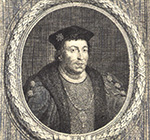
Henry Stafford, 2nd Duke of Buckingham Inherits
Henry Stafford, 2nd Duke of Buckingham, inherits Penshurst Place.
-
1447
Humphrey Stafford, 1st Duke of Buckingham Inherits
Humphrey Stafford, 1st Duke of Buckingham, inherits Penshurst Place. He was the first of three successive Dukes of Buckingham to own the estate.
-
1435
Humphrey, Duke of Gloucester Inherits
After the death of the Duke of Bedford, Penshurst became the property of his younger brother, Humphrey, Duke of Gloucester.
-
1430
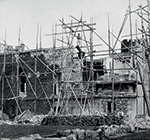
Buckingham Building Built
The second hall, set at the west corner of the original house is known as the Buckingham building, attributed to John, Duke of Bedford, King Henry IV’s third son.
-
1401
John, Duke of Bedford Owns Penshurst
Sixty years after de Pulteney’s death, Penshurst Place was in the hands of John, Duke of Bedford, King Henry IV’s third son and younger brother Henry V.
-
1392
Curtain Walls With Towers Built
After the Peasant’s Revolt in 1381 and with the threat of foreign invasion as his spur, Sir John Devereux set about enclosing the Penshurst Place manor with a massive system of crenellated curtain walks and turrets, so creating a defended manor house.
-
1341
Sir John de Pulteney Has Penshurst Place Built
Sir John de Pulteney, already the owner of two large town houses, wanted a country estate where he could hunt. Penshurst – conveniently located just half a day’s ride from London fitted the bill and, having acquired the estate in 1338, he set about building a suitable manor house. It has been suggested that the architect and carpenter could have been King Edward III’s. The house was completed in 1341 and much of it remains in its original state today.
